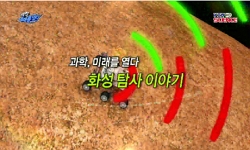Deep learning techniques developed in the fourth industrial revolution are used in various research fields. In addition, electrical resistivity exploration is a technique that can achieve ground engineering property values and is utilized in combinati...
http://chineseinput.net/에서 pinyin(병음)방식으로 중국어를 변환할 수 있습니다.
변환된 중국어를 복사하여 사용하시면 됩니다.
- 中文 을 입력하시려면 zhongwen을 입력하시고 space를누르시면됩니다.
- 北京 을 입력하시려면 beijing을 입력하시고 space를 누르시면 됩니다.
딥러닝 기법을 활용한 지반의 전기비저항 예측 = Predicting electrical resistivity of the ground using deep learning techniques
한글로보기부가정보
다국어 초록 (Multilingual Abstract)
Deep learning techniques developed in the fourth industrial revolution are used in various research fields. In addition, electrical resistivity exploration is a technique that can achieve ground engineering property values and is utilized in combination with the two fields. The objectives of this study are Deep Neural Network (DNN), Long-Short Term Memory (LSTM), and Gated Recurrent Unit (GRU), which utilize the combinatorial structures LSTM-DNN and GRU-DNN to predict electrical resistivity and ground behavior. For data collection, a test bed was installed at the top of the mountain on the slope for the exploration of electrical non-resistance, and the total length of the side lines and electrode spacing are 200m and 2m respectively. Electrode arrangements utilize a winner arrangement suitable for vertical resolution. The electrical resistivity values were measured for a total of 16 months from January 2019 to April 2020, with 52,800 electrical non-resistance data values. The data preprocessing process utilized min-max scaling techniques, and hyper-parameters were set in model generation. Finally, reliability was evaluated using RMSE, MAE, and R2 values in model verification. Finally, an electrical resistivity prediction model was developed, and the ground engineering property behavior of the slope was evaluated by converting the predicted electrical resistivity into the gap rate and the pitching coefficient.
국문 초록 (Abstract)
4차 산업혁명에 이르러 개발된 Deep learning 기법은 다양한 연구 분야에 활용된다. 또한 전기비저항 탐사는 지반 공학 물성치를 획득 할 수 있는 기법이며, 두 분야를 결합하여 활용하였다. 본 ...
4차 산업혁명에 이르러 개발된 Deep learning 기법은 다양한 연구 분야에 활용된다. 또한 전기비저항 탐사는 지반 공학 물성치를 획득 할 수 있는 기법이며, 두 분야를 결합하여 활용하였다. 본 연구의 목적은 deep learning의 다양한 알고리즘은 Deep Neural Network (DNN), Long-Short Term memotry (LSTM), Gated Recurrent Unit (GRU) 그리고 결합 구조인 LSTM-DNN과 GRU-DNN을 활용하여 전기비저항과 지반공학 물성치의 거동을 예측하였다. 데이터 수집을 위하여 전기비저항 탐사를 위해 사면의 산 정상부에 test bed를 설치하였으며, 총 측선 길이 및 전극 간격은 각각 200m와 2m이다. 전극 배열은 수직분해능에 적합한 wenner 배열을 활용하였다. 전기비저항 값은 총 2019년 1월부터 2020년 4월까지 총 16개월 동안 측정하였으며, 이때 전기비저항 데이터 값은 총 52,800개이다. 데이터 전처리 과정은 min-max scaling 기법을 활용하였으며, 모델 생성에서는 하이퍼 파라미터를 설정하였다. 마지막으로 모델검증에서는 RMSE, MAE, R2값을 활용하여 신뢰도를 평가 하였다. 최종적으로 전기비저항 예측 모델을 개발하였으며, 예측된 전기비저항을 활용하여 간극률과 투수계수로 환산하여 사면의 지반 공학 물성치 거동을 평가하였다.
목차 (Table of Contents)
- Ⅰ. 서 론 1
- Ⅱ. 배경 이론 3
- 1. 전기비저항 3
- 2. 심층학습(Deep learning) 5
- Ⅲ. 연구 방법 12
- Ⅰ. 서 론 1
- Ⅱ. 배경 이론 3
- 1. 전기비저항 3
- 2. 심층학습(Deep learning) 5
- Ⅲ. 연구 방법 12
- 1. Deep learning 예측 모델 생성 구성 12
- 2. 데이터 수집 13
- 3. 데이터 정규화 16
- 4. 모델 생성 17
- 5. 모델 검증 18
- Ⅳ. 연구 결과 19
- 1. 전기비저항 측정 결과 19
- 2. Deep learning 결과 27
- Ⅴ. 토 의 35
- 1. 지반 물성치 평가 35
- Ⅵ. 결 론 37
- 참 고 문 헌 38
- 영 문 초 록 43
- 감 사 의 글 45












